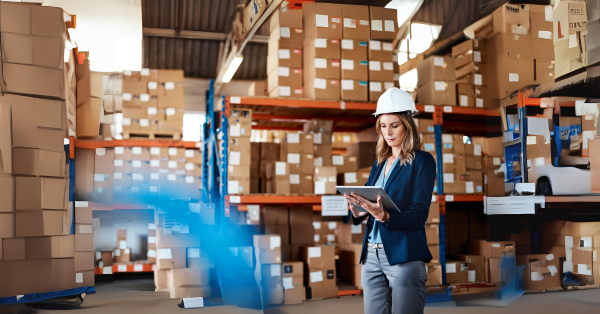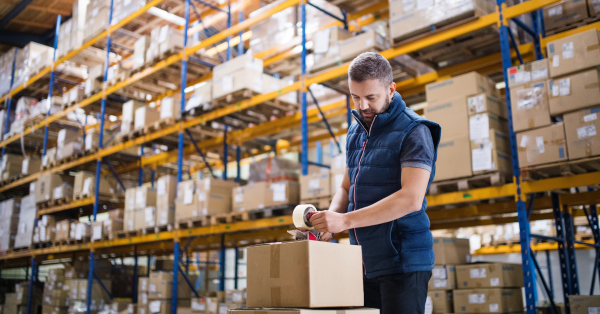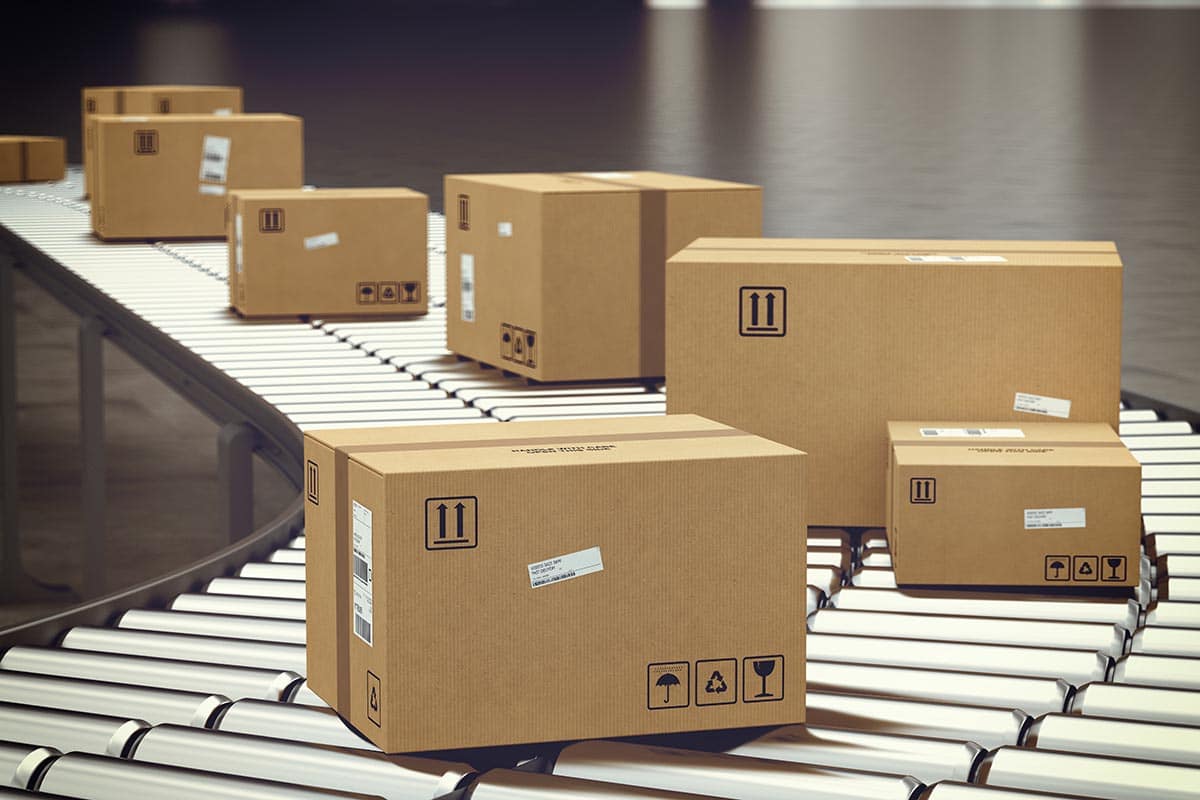
Your business is booming, but you're hitting some roadblocks in getting orders out fast enough. To keep up with demand, you're thinking about opening a new place to ship and store your stuff. Turns out, there are two types of facilities: distribution centers and fulfillment centers. What's the difference? Which one will help you grow best? Let's figure that out.
What is a Fulfillment Center?
Fulfillment centers focus on quickly delivering goods to individual customers and offer an array of services to help with this goal. They typically receive, pick, pack, kit, and label your products and may also offer custom packaging. They may also have a dedicated customer service team that can handle interface with customers for you, allowing you to focus on more strategic goals. They can also help you save on overall shipping costs as they typically service many clients at the same time.
However, there are some trade-offs you’ll want to keep in mind when looking at fulfillment centers. As they are focused on speedy, efficient delivery, they may hold less of your inventory at any given time. That means you’ll need to continually replenish your stock, and you may be charged extra for any that isn’t sold after a specific time, typically one month.
What does a Fulfillment Center do?
- Handles incoming orders from customers.
- Stores and manages stock efficiently.
- Retrieves items from shelves and prepares them for shipping.
- Sends out orders promptly to customers.
- Manages product returns and exchanges smoothly.
Third-party Logistics Companies as Fulfillment Centers
Most third-party logistics companies (3PLs) offer a relatively limited menu of services that focus on getting lower shipping prices for their clients. They won’t offer the kind of bespoke services that small businesses need to reach their customers or for specialized orders that have a limited run. However, third-party fulfillment (3PF) companies do offer these services, along with 3PLs that operate their fulfillment centers. Working with one of these 3PLs allows you to save on shipping costs while getting granular control over your fulfillment process.

What is a Distribution Center?
A distribution center combines some of the capabilities of traditional logistic warehouses with those of newer fulfillment centers, offering long-term storage options that can be synchronized to an extent with your delivery needs. They are often located close enough to major markets to make shipping to them fairly easy but far enough away to help you save on costs. They will also typically have the ability to ship them in bulk to other locations, especially other retailers who may sell your products.
Distribution centers tend to ship from business to business or fulfillment centers, which means you will have a limited ability to ship directly to your customers. In addition, they offer less frequent shipping times and are dependent on certain volumes being shipped at once rather than individual orders. They are also typically located away from major markets, which can further increase shipping times. However, if your primary concern is moving more of your inventory closer to shipping points, then a distribution center could be right for your needs.
What does a Distribution Center do?
- Accepts and stores goods from suppliers.
- Tracks and organizes inventory efficiently.
- Organizes products for distribution to various destinations.
- Prepares bulk orders for shipment to retail locations or other distribution centers.
- Coordinates transportation logistics for outgoing shipments.
Distribution Center vs Warehouse
Warehouses were once the critical node in supply chains and served as places where a large number of goods could be stored before they could be sold. However, as newer technology that could monitor supply flows made the just-in-time logistics system possible, warehouses became increasingly obsolete. While they’re still in use, modern logistics chains need separate warehousing and distribution facilities.
Distribution centers facilitate the flow of goods from suppliers to retailers. Their primary role is to add value to a product through packaging, order fulfillment, cross-docking, or other services that set a product in motion. Rather than trying to optimize the use of storage space, distribution centers optimize the customer experience and attempt to minimize shipping times.
Related Reading: 10 Types of Storage Warehouses for Your Storage Needs
Fulfillment Center vs Distribution Center
Fulfillment centers and distribution have different but complementary capabilities, so you should carefully consider what each has to offer in light of your business needs before choosing one (or both).
Advantages and Disadvantages of a Distribution Center
Pros
- Delivers bulk quantities of goods from business to business
- Can store large quantities of your inventory at once
- Offers long-term storage at relatively low costs
- Helps you position more inventory closer to target markets
- Costs less overall than fulfillment centers
- Ideal for goods that do not require finishing or individual packing
Cons
- Less frequent shipping times as goods tend to ship in bulk
- Goods are delivered on palettes so aren’t packaged at the center
- Located further from markets so shipments may take longer
- Little ability to interface directly with your customers
- Offer fewer services overall than a fulfillment center
Advantages and Disadvantages of a Fulfillment Center
Pros
- Delivers goods straight to your customers
- Frees up space occupied by your inventory
- Located close to your customers for short shipping times
- Trained staff receives and handles your inventory
- Can pick and pack products for you
- Kitting services are often available
- Can label shipments and sometimes offer custom packaging
- May have a customer service division you can use
- Will manage returns and offer reverse logistics services
- Outsourcing logistics needs allows you to focus on your business’s strengths
- Automation offers transparency throughout each step of your supply chain
Cons
- Limited storage space available at any given time
- Only offers short-term storage
- Unsold inventory becomes more expensive to store
- Unable to ship large amounts of goods in bulk
- More expensive than a distribution center due to location and additional services
Which is Better: A Fulfillment Center or a Distribution Center?
Fulfillment and distribution centers are critical components of today’s e-commerce logistical infrastructure, but each serves a specific set of business needs.
In general, if your business is relatively small, doesn’t have a customer service division, and relies on delivering goods directly to customers, you may need the services a fulfillment center offers. On the other hand, larger businesses that need to ship items in bulk between locations may want to opt for a distribution center.
Regardless of what you decide, it’s important to choose a logistics partner you can trust to ship your goods on time, maintain your reputation with customers, and grow your business.
Related Reading: How to Pick the Location of Your Fulfillment Center
Why outsource warehouse management and fulfillment services to a 3PL?
Outsourcing warehouse management and fulfillment to a 3PL offers several advantages. It lets you focus on what you're best at, like making great products or connecting with customers, while experts handle the complexities of storing and shipping. Plus, 3PLs have advanced technology and systems that make everything run smoother and faster. You'll save money, be more flexible to changes, and keep your customers happy.
How can a fulfillment center help you grow your business?
The 3PL you work with is responsible for delivering every one of your packages on time and without mistakes. They also need to be able to handle any questions or concerns that your customers might have if there is a shipping problem. Ship My Orders has a dedicated customer service team on-site at our warehouse, ready to field calls. We’re accurate, quick, and responsive and can act in real-time to give the best customer experience possible, a critical requirement in today’s competitive eCommerce environment. Visit our website to learn more about our order fulfillment services. Request a free quote today!


-1.png)


